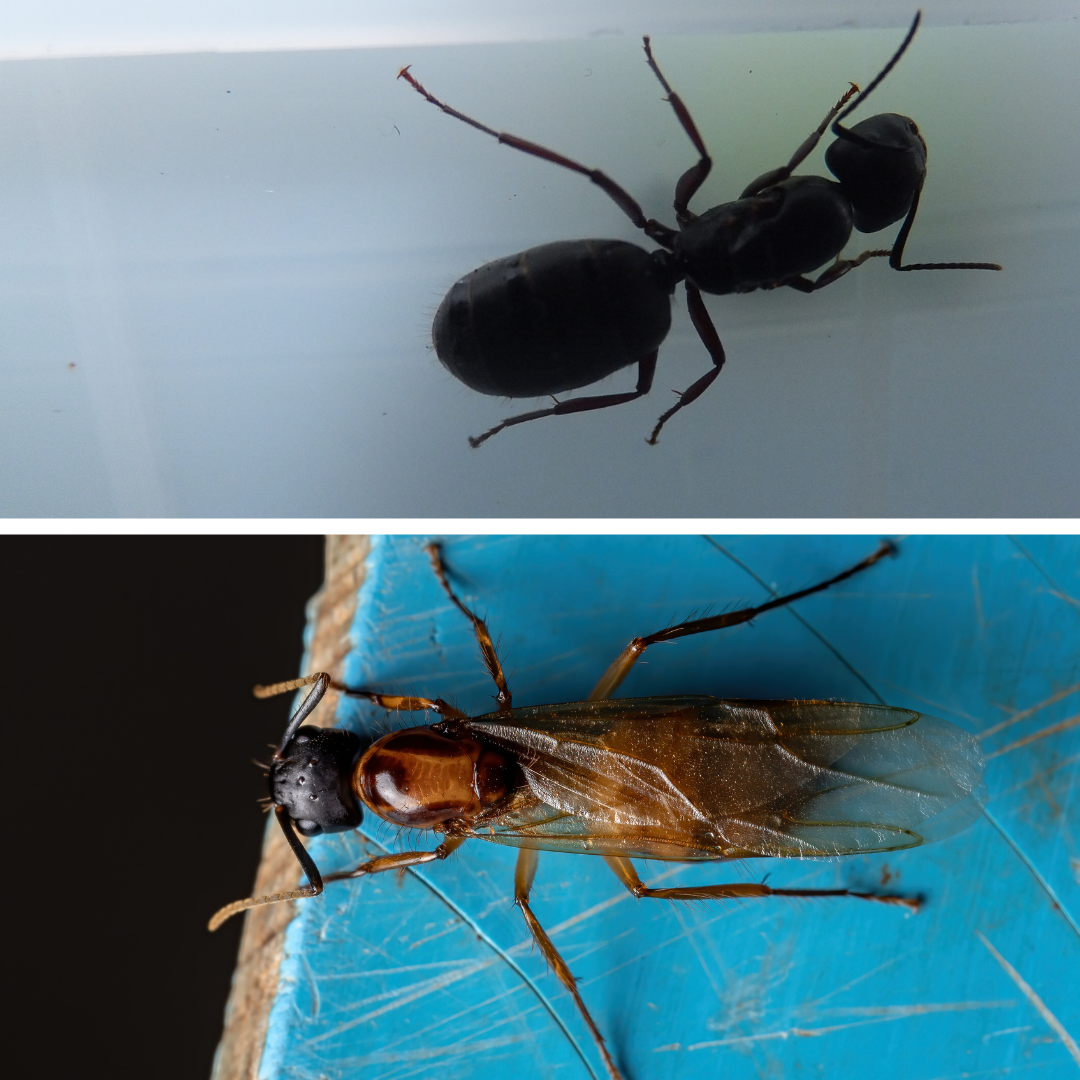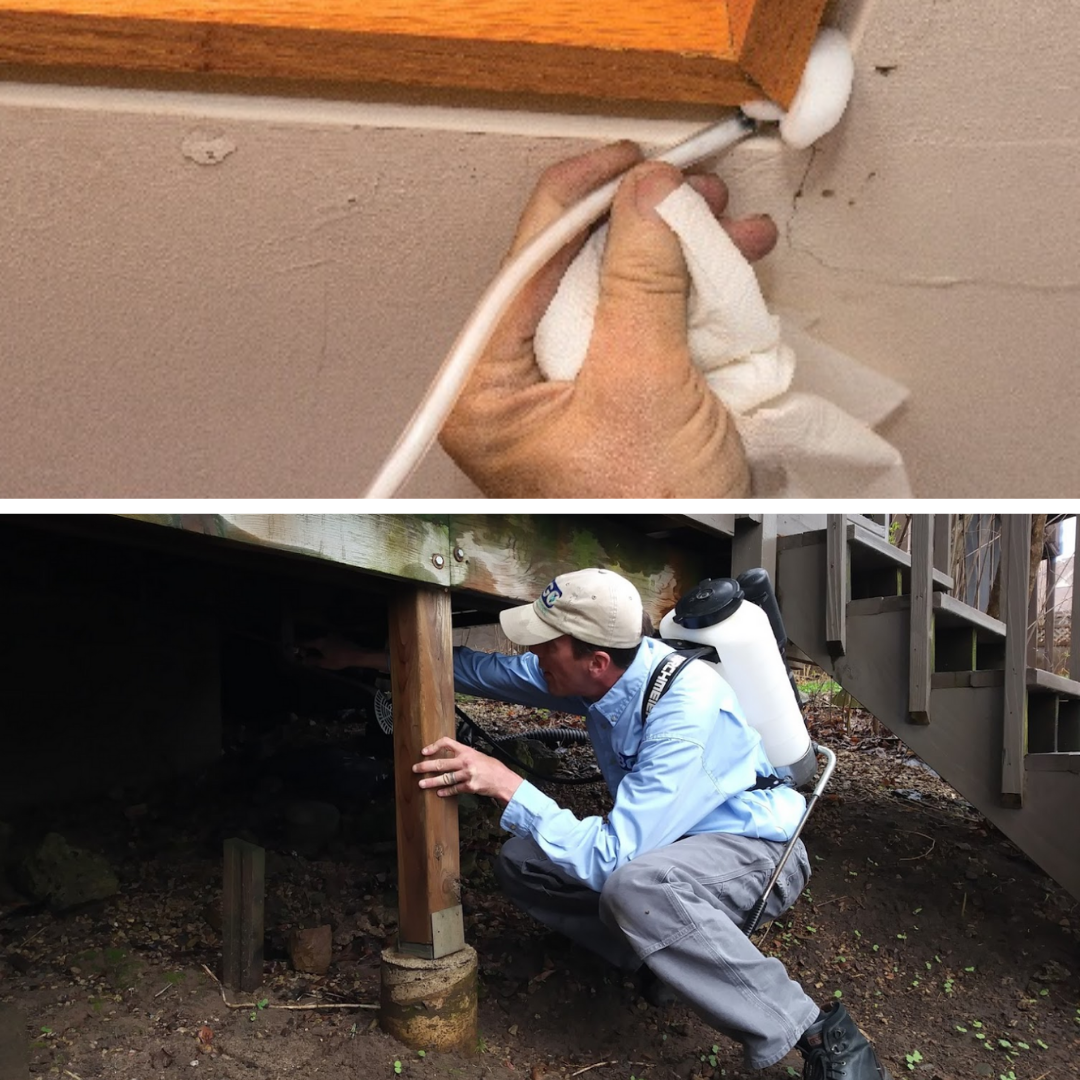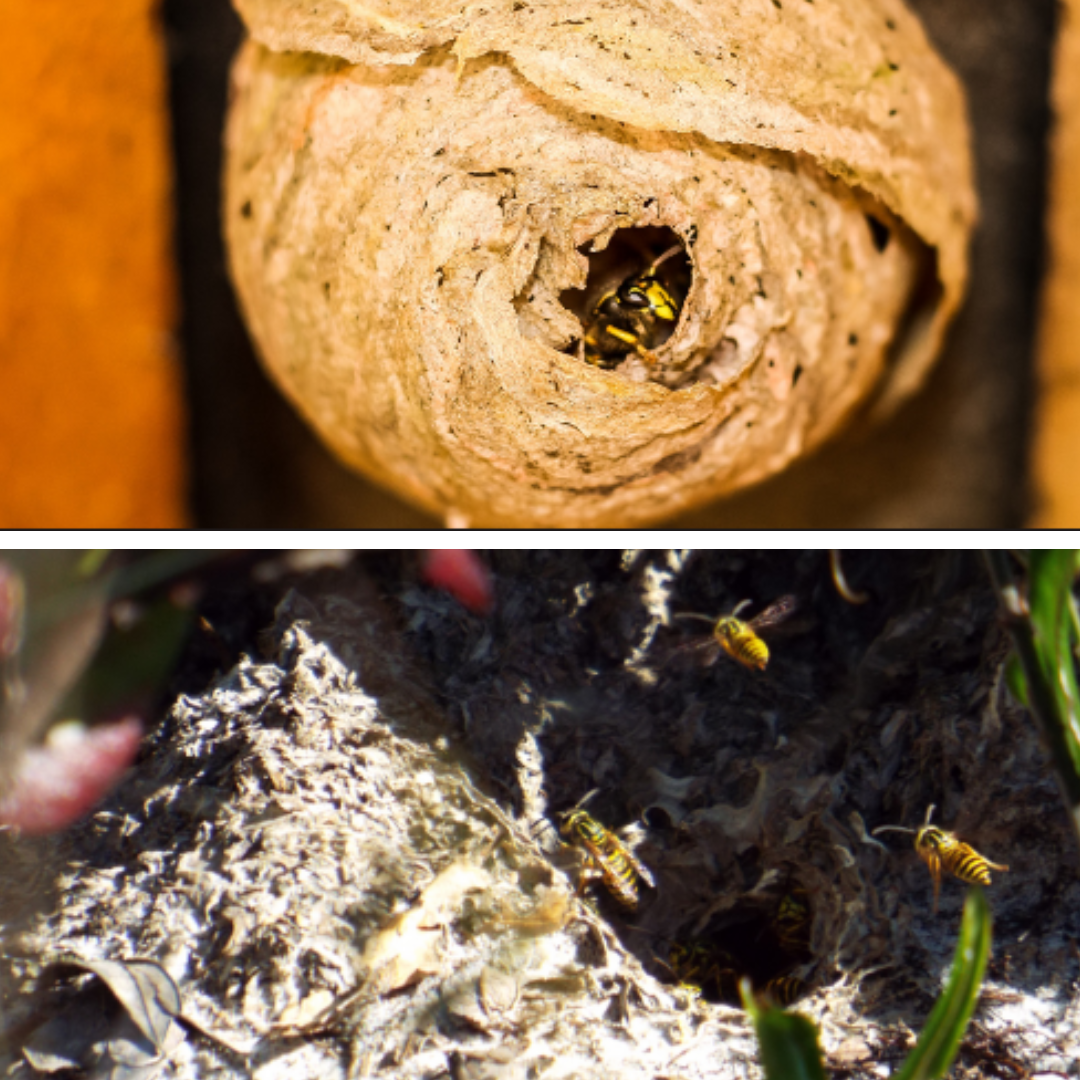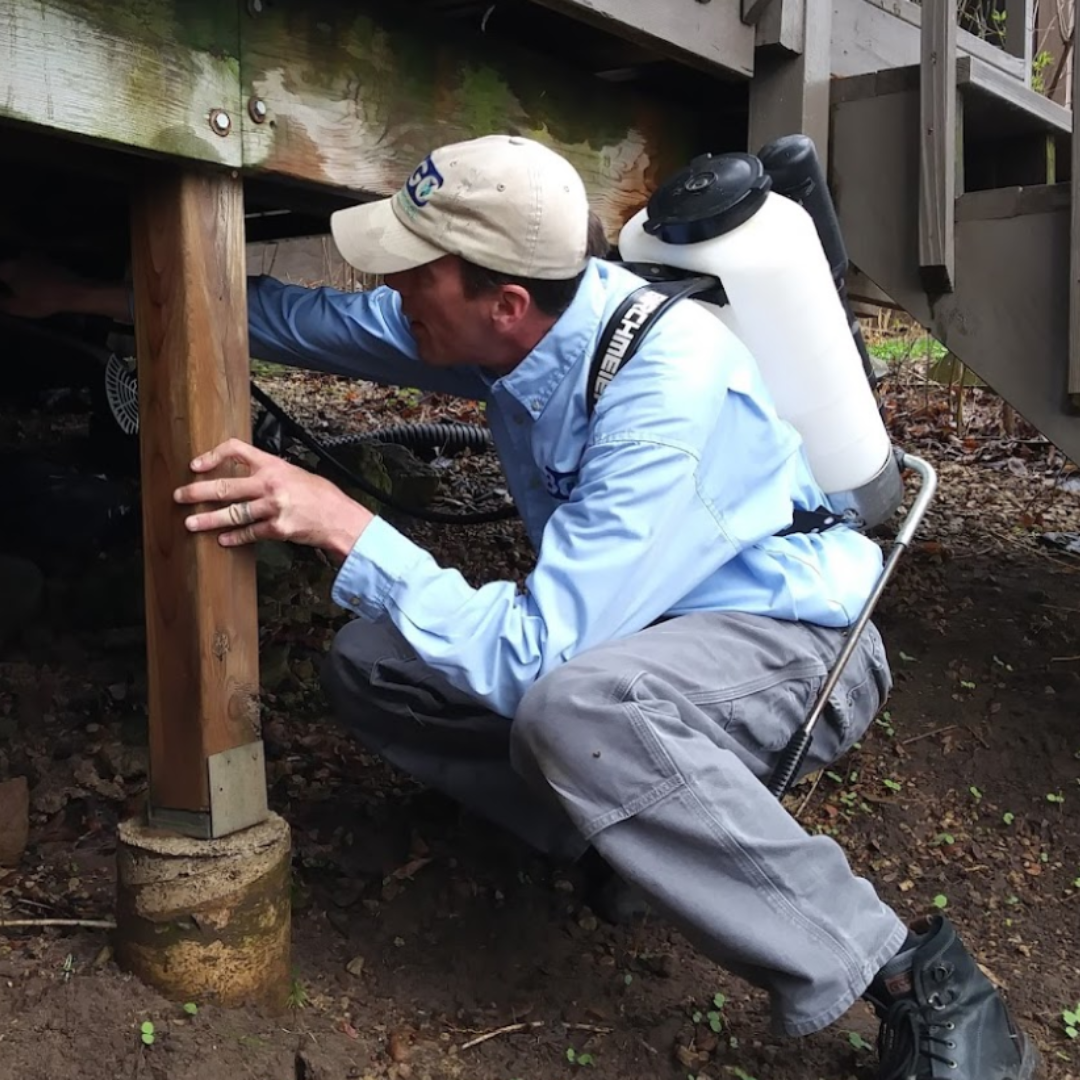Contact BOGO for all your Burnsville Minnesota Pest Control Needs.
Burnsville is home to over 60,000 residents and 76 parks. All the parks add up to over 1,750 acres of natural land. Making a lot of the city a great habitat for various pests.
These are the most common pests in Burnsville Minnesota
(Click on the names to keep from scrolling)
If you have any questions or concerns, or would like to schedule an appointment
Call Us Today! 952-404-BOGO (2646)
Share This Page!
Ants in Burnsville Minnesota
Carpenter Ants
Carpenter ants are a common ant to see in Burnsville Minnesota. They are attracted to water-damaged wood and rotted wood. When they are seen outside inside trees the ants themselves are not killing the tree. The tree has already started to show signs of rot. Carpenter ants that are inside also do the same thing. When there is an ant colony inside a home they are often telling the homeowners that there is some other underlining problem. They could be attracted to a rotted deck that is touching the home or a leak behind a wall inside. The ants chew tunnels through the rotted wood to build their nests. If there are ants with wings inside or outside the home they are either females searching for a place to make a nest or, male and female ants searching for a mate.
Pavement Ants
Pavement ants are smaller than carpenter ants measuring only 0.3 cm in length. They vary in color between brownish red or all brown. When the ants get inside homes in Burnsville Minnesota they can build nests inside the foundation, under cement slabs, under heated floors, and in places that are high in moisture. Unlike carpenter ants pavement ants do not cause structural damage. Seeing pavement ants inside doesn’t always mean there is a nest inside unless you see them in the wintertime or you see ants with wings. During the warmer months, ants will travel up to 100 yards away from their nest to find food. Sometimes these foraging ants find food inside a home and bring it back to their nest outside. Their nests outside are easy to identify as they are marked with a circle of sand and dirt leading into a hole under the ground.
Ant Service
No matter what ant you’re dealing with the service we provide for our Burnsville Minnesota residents is effective for all of them. When we treat the home we specifically spray around the foundation of the home which is where most ants get inside the home. The spray works in a way that doesn’t kill the ants on contact and allows them to bring the product to the rest of the nest in the ground. It’s a fact that only about 10% of ants ever leave their nest. The ant-killing products that are sold at department stores only kill 10% of them. By not killing the rest of the colony the ants will continue to reproduce and may even perform budding to make the problem worse. Budding happens when a nest of ants feels threatened. They split up some of the workers, pupa, and larva to bring them to another location and start a new nest that’s in a safer area. This can double or even triple the number of ants seen inside.
Mice in Burnsville Minnesota
Mouse Behavior
Mice in Minnesota don’t hibernate in the winter and can be seen inside during the winter. They can climb up stucco and brick walls to find entry points inside homes. Foundations around homes can also be used as a way to enter inside homes. The mice are constantly moving in and out of homes carrying food to hoard for winter. When the mice climb and move in and out of the structure they leave scent trails. Scent trails are made by the mice urinating tiny microscopic droplets while they are moving around. These trails help the rest of the mice in the group to find their way inside. Over time the scent trails can start becoming visible. These are called rub marks. Rub marks are a residue of the mud, grease from their fur, and urine.
Mouse Habitats
When it comes to winter in Burnsville Minnesota there aren’t very many things that are alive outside. If they are they aren’t mating or breeding because of how harsh the temperatures are. A newborn animal would not survive very long if it was born outside in the middle of winter. Mice figured out that by nesting inside homes they would be able to continue breeding and raising young throughout the winter. When inside homes they often build their nests inside insulation inside attics, in unfinished rooms, or behind walls. They often dig tunnels or holes into the insulation. These are great indicators that the home has mice. Outside when it’s warmer mice live in trees or burrows under the ground. They thrive in wooded areas or near bodies of water. These places provide them with their favorite foods. Seeds, nuts, fruits, and insects.
Mouse Service
Our mouse services in Burnsville Minnesota are based on the science of mouse behavior. They are creatures of habit and use the same kind of entry points to get inside a home. The most effective way to mouse-proof a home is by sealing up the entry points from the outside. Our service starts with a thorough inspection of the exterior of the property. We take pictures of entry points, evidence of mouse activity, and limitations. Limitations regard structures around a home that may block us from sealing up part of the home. The second part of our service is to seal up the home. We use materials that most pest control companies do not use. They are long-lasting and blend in with the rest of the home. Our service is so successful that we back it up with a 2-year warranty or 2 visits 2-year warranty if the home has limitations.
Wasps in Burnsville Minnesota
Paper Wasps
Paper Wasps are relatively large wasps measuring around 1 inch in length. For their size, their nests don’t get very large. By the end of the summer, most of their nests in Burnsville Minnesota will have around 30 workers. The nests are unique in that the hexagonal cells that are in all wasp’s nests are usually visible from the outside. They are also built in areas that keep the nest dry when it rains. The papery material their nests are made out of may fall apart when wet. They find the material for their nests by chewing on dried-up wood and mixing it with their saliva. People with wood decks often see an increase in paper wasp activity.
Yellow Jackets
Yellow jackets can have nests with 1,000-4,000 workers by the end of the summer. With their nest growing to these large sizes it becomes difficult for all the wasps to find food to eat when temperatures start to drop. Because of this many start to starve which enhances their aggressive nature at the end of the summer. They are capable of stinging multiple times without losing their stingers or dying. Their nests can vary in many different locations. Their nests often catch many people off guard. They can be located underground, inside trees, inside spherical aerial nests, and man-made structures.
Wasp Service
Killing a wasp nest can be a dangerous task. Some people are unaware that they have allergies to wasp stings. This could result in an unplanned hospital visit or worse. Wasp nests that are enclosed inside another structure, or in the ground should not be treated with over-the-counter products. These nests make it hard to know how many worker wasps are inside the nest at any given time. It’s important to have the correct protection gear on and use the correct pesticide. We use a product that only a licensed professional pest technician is able to use. Its effectiveness is driven by the fact that the wasps that leave the nest don’t die as soon as the product gets on them. It lets them stay alive long enough to bring the product inside the nest and spread it with the rest of the wasp colony.
Spiders in Burnsville Minnesota
Spider Behavior
Most people know that spiders eat insects. In Burnsville Minnesota some of the most common insects on the menu are; mosquitos, ticks, moths, flies, ants, and aphids. They also eat insects that are invasive to Minnesota. These insects are capable of spreading diseases to humans and plants. Such as stink bugs and Asian lady beetles that damage crops, fruits, and vegetables. Their role in our ecosystems is very important. That doesn’t mean they can’t still be a nuisance. When spiders build cobwebs on or inside the home, most homeowners understandably prefer not to see them. They belong in nature not inside homes. Spraying in the lawn and on plants around the home is unadvisable and impacts the balance that spiders bring to the ecosystems around them.
Spider Habitat
Because spiders live off of eating insects, they are going to pick to live in a place with an abundance of insects. When it comes to spiders that live inside they are often living inside homes that are also dealing with other insect infestations. Whether ants are getting inside or moisture pests like springtails, silverfish, earwigs, and others. These insects often navigate through the house using wires and pipes that lead into the unfinished electrical or furnace room. This is the reason for most spider activity to be seen in any unfinished rooms in a basement or closet. Outside spiders prefer living in wooded areas and habitats near bodies of water where mosquitos, flies and ticks are abundant.
Spider Service
The spider service we offer is done in the spring or summer. Homes near bodies of water or in a wooded ecosystem should be treated multiple times. The product we use stays effective for 2 months when applied on the exterior of the home. Without reapplying the product during the summer the spiders will come back. Inside many cobwebs are small egg sacs. Each egg sac can hatch out hundreds of spiders. This is why we focus on the outside of the home the most. We start each service by knocking down as many cobwebs as we can and reach. After knocking down the webs we spray the foundation, around windows, soffits, and corners of the structure.
Read Our Blog “We Love Living Near Woods and Water and so do Spiders!”
Boxelder Bugs and Stink Bugs in Burnsville Minnesota
Boxelder Bugs
Boxelder bugs can often be seen moving around the inside of homes and buildings in Burnsville Minnesota in the middle of winter. They specifically come out on sunny days in the winter and will crawl toward windows to absorb some of the sun’s rays. In the spring boxelder bugs start looking for ways to get out of the house. This is when they are the most active inside. As they exit the structure they fly to locate female boxelder trees. When on the trees the bugs mate and lay eggs on the leaves, branches, and bark. The boxelder bugs also eat the helicopter seeds that grow on the trees. In the fall, as the temperature drops, they start looking for places to over winter.
Stink Bugs
Stink bugs can also be seen roaming around the inside of homes and buildings in Burnsville Minnesota in the winter. They make their way inside in the fall. They enter through windows, chimneys, soffits, and cracks in the siding and foundation. On sunny winter days, their bodies can warm up enough to wake up from hibernation. They often crawl toward windows as they attract heat from the sun even when it’s cold outside. In the spring all the stink bugs that overwintered inside will look for ways to get out of the house. They start mating as soon as the weather starts to warm up in the spring. The females lay eggs on various plants. Many of them lay them on some type of crop. A majority of their diet consists of; grapes, sweet corn, tomatoes, and apples.
Boxelder and Stink Bug Service
Our boxelder and stink bug service is extremely thorough. For the treatment to be effective a majority of the exterior needs to be sprayed. Both bugs are capable of flying making it easy for them to find entry points that are not visible from the ground. The spay when applied stays effective for 2 months. When the bugs land in the sprayed areas they die in about 30-45 minutes. This makes it important to apply the product before the bugs are seen swarming on the exterior of the structure. As the bugs start landing on the exterior there is most likely already a population living inside.
Read Our Blog “Minnesota Fall Pests”
Ash Tree Service in Burnsville Minnesota
Emerald Ash Borer Behavior
The emerald ash borer is an invasive species that traveled to America from Northeastern Asia. They were first recorded in Minnesota in 2009. Since then most of the ash trees in Burnsville Minnesota have become infected. One emerald ash borer lays around 60-90 eggs inside one tree. When the eggs hatch the larvae feed on the layer of the tree right below the bark. The layer is called the cambium layer. As they feed on the tree, the tree is no longer able to spread nutrients and water to all the branches and leaves.
Ash Tree Treatment
The treatment we use for the ash trees in Burnsville Minnesota is pneumatic micro-injections. Our professional arborist has tested out many other treatment options but has found this one to be the most effective. The reason why it’s so effective is because its injection is done individually instead of simultaneously. By doing it individually each injection point receives the same amount of product which makes sure the entire tree is protected.
BOGO Provides Pest Control Services For the Twin Cities and Beyond!
Anoka|Apple Valley| Bloomington|Burnsville|Champlin|Chanhassen|Coon Rapids|Cottage Grove|Deephaven| Delano|Eagan|Eden Prairie|Edina|Elk River|Excelsior|Golden Valley|Independence|Inver Grove Heights| Lino Lakes|Long Lake|Maple Grove|Maple Plain|Maplewood|Medina|Minneapolis| Minnetonka|Minnetrista|Mound|New Brighton|New Hope|North Oaks|Orono|Prior Lake|Plymouth|Ramsey|Rogers|Roseville|Shoreview| Shorewood|Stillwater|St. Louis Park|St. Paul|Victoria|Waconia|Wayzata|White Bear Lake|Woodbury|
If you have any questions or concerns, or would like to schedule an appointment
Call Us Today! 952-404-BOGO (2646)






















